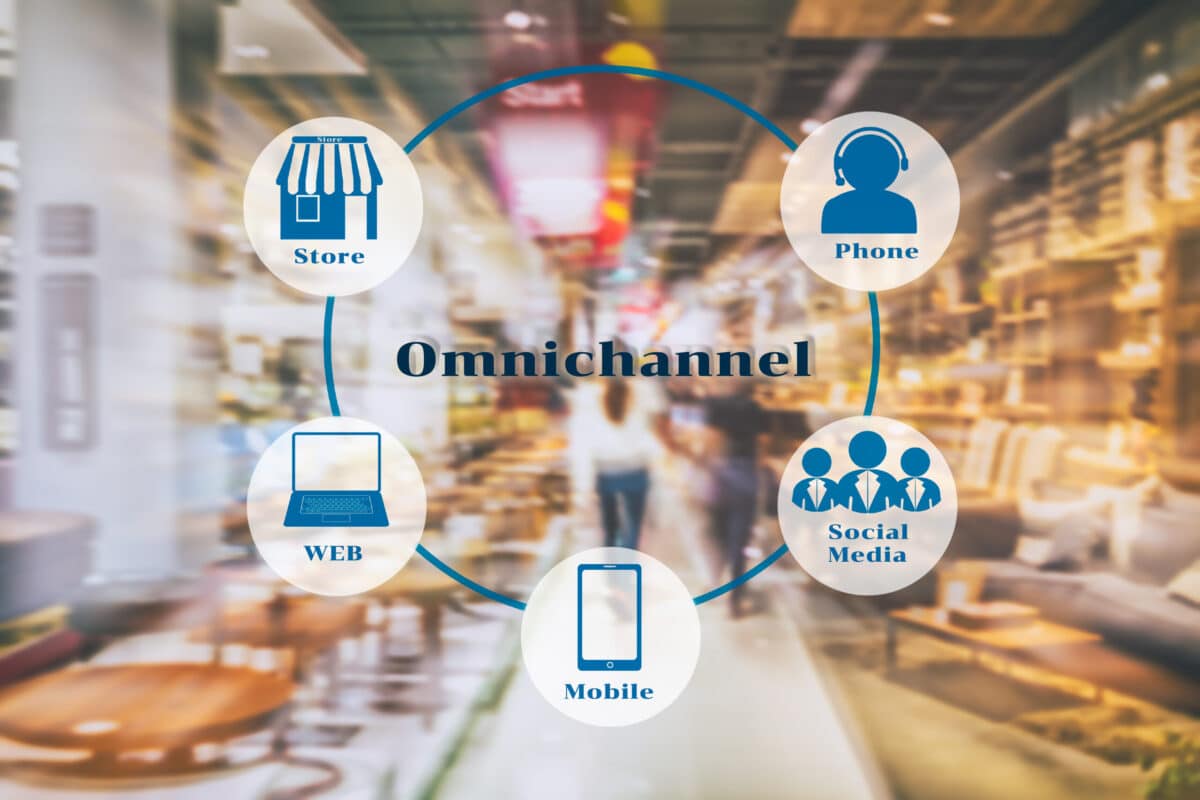No matter how big or small your business is, retaining customers for a long period of time is crucial to your success. Not only will increasing your retention rate increase your revenues, but you will also grow your community of loyal customers. By exploring the various ways of increasing your customer retention, this post will explain how to provide exceptional customer service, personalize their experiences, use effective marketing strategies, and incorporate a customer loyalty program.
We will discuss the significance of providing excellent customer service and how it can impact your overall business success. You will also learn about different ways to encourage customers to stay loyal through personalized experiences, loyalty programs, and effective marketing strategies.
Furthermore, we will explore the concept of churn rate and its effect on reducing long-term costs associated with acquiring new customers. We’ll delve into why collecting feedback from both satisfied and dissatisfied customers is crucial in developing a successful retention strategy.
You’ll discover how social media plays a vital role in engaging with current customers while attracting new ones. Finally, we’ll touch on some key takeaways that businesses should consider when creating a comprehensive customer service strategy to retain their valued clientele.
This blog post intends to provide useful information on how businesses can enhance their customer loyalty by devising successful plans that center around delivering unparalleled services for all of their customers.
Table of Contents:
- What is Retention?
- Identifying Customer Pain Points
- Proactive Solutions
- Engagement Strategies
- Retention Tactics
- Analyzing Results
- FAQs in Relation to Customer Retention Strategies
- Conclusion
What is Retention?
Retention is the act of keeping customers loyal to your business. It’s an important concept for small businesses, as it costs more to acquire a new customer than it does to keep an existing one. Retention strategies can help you maximize profits by reducing churn rate and increasing customer loyalty.
Attribution is key when calculating retention rates; this is the process of assigning value to different marketing channels that contribute to a sale or conversion. For instance, when a purchase is made from your website following an individual clicking on a Google ad, you can assign some of the value of that sale to the advertisement campaign. By tracking attribution across multiple channels, you can determine which campaigns are most effective in driving sales and retaining customers over time.
Churn rate refers to the percentage of customers who leave within a given period—typically monthly or annually—and it’s an important metric for understanding how well your retention efforts are working. If your churn rate is too high, then you need better solutions for engaging with and keeping customers around longer-term.
We must take proactive steps to guarantee customer satisfaction and stave off potential dissatisfaction that might lead to attrition. This includes giving comprehensive onboarding support so users can hit the ground running, sending automated emails with discounts after certain milestones (three purchases for example), as well as creating helpful tutorials on how best utilize features on their products/services page. By employing these tactics, we ensure customers will remain engaged and happy in the long-term.
Identifying Customer Pain Points
Maintaining client loyalty is a critical element of having a prosperous enterprise. Identifying customer pain points is essential for developing strategies to keep customers engaged and prevent them from cancelling or discontinuing service.
To gain insight into customer needs and wants, surveys, interviews, focus groups, online reviews and other methods can be utilized. Gathering input through surveys, conversations, group discussions, online evaluations and other approaches can give insight into what customers expect from your product or service. By understanding their needs and wants you can create solutions that will help address any issues they may have with your product or service.
Once you have identified potential customer pain points it’s important to take proactive steps to address them before they become an issue. This could include providing additional support resources such as tutorials or FAQ pages on your website, offering discounts on certain services, improving communication between customers and staff members, implementing new features that make the user experience better etc These are all ways that businesses can stay ahead of potential problems before they arise which helps build trust with their customers over time.
Engagement strategies are also key when it comes to retaining customers long-term. Offering rewards programs or loyalty incentives can encourage repeat purchases while creating campaigns around special events like holidays can help increase engagement levels among existing users as well as attract new ones too. Additionally using social media platforms like Facebook and Instagram for promotions gives businesses an opportunity to interact directly with their audience in real-time which helps foster relationships between companies and their consumers over time too.
Retention tactics should also be implemented in order to ensure that once a customer has made a purchase they remain loyal long-term . This could include sending out newsletters with helpful tips related to the products/services being offered , giving away free samples , offering exclusive deals only available for current subscribers , providing personalized recommendations based off past purchases etc All these things help create a sense of value for the consumer which increases satisfaction levels resulting in higher retention rates overall .
Finally, analyzing results is critical when it comes to measuring success in identifying customer pain points. Gathering data from surveys, polls, focus groups etc., allows businesses to gain insight into how satisfied (or dissatisfied) people are with certain aspects of the product/service so adjustments can be made accordingly if necessary. It is imperative to frequently assess analytics such as conversion and churn rate in order to recognize where improvements must be made and take action swiftly.
Identifying customer pain points is an essential step in developing effective strategies for customer retention. Proactive solutions, such as providing exceptional service and creating loyalty programs, can help to address these issues before they become bigger problems.
Proactive Solutions
Proactive solutions are essential to the success of any small business. It’s important to anticipate customer pain points before they become an issue and take steps to address them quickly. Anticipating and responding to customers’ needs swiftly is essential for any small business’s success, as it can help guarantee customer loyalty and contentment with the services provided.
One way to proactively solve customer problems is by providing excellent customer service. This means being available when customers need assistance, responding promptly, and having knowledgeable staff who can answer their questions accurately. Additionally, it’s important to provide helpful resources such as FAQ pages or user guides so customers can find answers on their own if needed.
Another proactive solution is staying up-to-date on industry trends and changes in technology that may affect your business operations or products/services offered. Being aware of these changes allows you to make necessary adjustments before they impact your customers negatively or create a gap between what you offer versus what competitors offer.
Maintaining a steady watch over customer feedback via surveys, focus groups, social media and the like can help you detect potential issues before they become serious complications in future. Additionally, paying attention to reviews left online by current and past clients will give insight into how well (or not) people perceive your brand which helps inform decisions about future strategies or campaigns related to marketing efforts moving forward .
Finally, creating a loyalty program for repeat buyers is another great way of proactively solving customer pain points. This rewards those who have been loyal over time while encouraging others who haven’t yet made a purchase but might be interested in trying out one of your products or services eventually, resulting in increased sales overall.
Proactive Solutions can help small businesses retain customers and increase their bottom line. To further this goal, the next heading will discuss Engagement Strategies to keep customers coming back for more.
Engagement Strategies
Engagement strategies are key to keeping customers coming back. It’s important to understand customer pain points and develop proactive solutions that will help address them. To further enhance customer experience, it is beneficial to identify and proactively address any potential issues they may face.
1. Customer Loyalty Programs:
Offering loyalty programs is an effective way of rewarding loyal customers for their continued support and encouraging them to come back for more purchases. Rewards like price cuts, gratis items, or limited access to offerings can be granted as part of loyalty schemes for thanking devoted shoppers and motivating them to make further purchases.
2. Personalized Experiences:
Creating personalized experiences helps build relationships with your customers by making them feel special and appreciated. This could involve offering tailored content, customized recommendations, or other unique features that make the customer experience more enjoyable and memorable.
3. Content Marketing
Creating content of worth for your intended audience, such as blog posts, videos and infographics, is a way to interact with them on a more profound level than typical advertising can accomplish. This type of strategy helps build trust between you and your customers which leads to increased loyalty over time.
4. Social Media Engagement:
Leveraging social media platforms like Facebook, Twitter, Instagram etc., is an excellent way of engaging with current customers while also reaching out potential new ones at the same time. By actively participating in conversations related to topics relevant to your business you can create meaningful connections with both existing & prospective clients alike – all while boosting brand awareness & visibility in the process.
Running promotions and special offers periodically not only encourages existing customers but also entices potential new ones as well. Providing discounts or coupons on certain products, or running contests and giveaways are great ways of increasing engagement levels amongst consumers while giving yourself some extra exposure too.
Interacting with patrons is an integral part of customer loyalty, and by utilizing successful engagement plans you can guarantee that your customers stay devoted to your organization. Moving on from here, we will discuss some tactics for retaining those customers in the next section.
Retention Tactics
Retention tactics are essential for any business that wants to grow and succeed. Identifying customer pain points, providing proactive solutions, and engaging customers with strategies are all important steps in retaining them. Here we will discuss some of the most effective retention tactics that can help businesses keep their customers loyal.
Identifying Customer Pain Points:
The first step is to identify what your customers’ pain points may be so you can address them proactively before they become an issue or cause dissatisfaction. A useful method to discover customer pain points is by administering surveys or focus groups and inquiring about their involvement with your product/service, what can be enhanced, etc. You can also look at customer reviews online as well as complaints from past clients to gain insight into common issues people have with your business offerings. This information will help you create targeted solutions that address those needs directly and improve customer satisfaction overall.
Once you’ve identified areas that require improvement, it’s time to take action and demonstrate your commitment to customer satisfaction. Offering discounts on certain products/services or providing additional support resources such as tutorials or FAQ pages can demonstrate to customers that their experience is a priority. Additionally, setting up automated emails that remind users when they need to renew subscriptions or check back in on something related not only provides a helpful reminder but also showcases your commitment to ensuring an enjoyable experience every single time.
Leveraging social media platforms such as Instagram Stories and Facebook Ads is a great way to give businesses an edge in engaging customers. These channels provide an opportunity to reach larger audiences more rapidly than ever before, not just for advertising but also for direct engagement with potential and existing customers who may have otherwise missed out on the services organically through search engines. Additionally, setting up loyalty programs where members can reap rewards based on usage levels over time or offering exclusive discounts via email campaigns are excellent strategies that will help brands keep their customer base engaged.
Retention tactics are key to the success of any small business, and should be closely monitored for effectiveness. Analyzing results is essential in order to ensure that your retention strategies are working as intended and producing the desired outcomes.
Analyzing Results
Analyzing results is a critical part of any customer retention strategy. It’s important to understand how effective your tactics are in order to make informed decisions about the future of your business. In order to properly assess the efficacy of your customer retention strategies, you should be monitoring certain key performance indicators.
The first metric you should track is customer lifetime value (CLV). CLV measures how much revenue a customer generates for your business over their entire lifespan with you, taking into account both current and potential future purchases. This can aid in pinpointing the patrons who are most profitable and deciding where to direct your efforts for maintenance tactics.
You should also measure the cost per acquisition (CPA) for each new customer that signs up or makes a purchase from your business. CPA helps determine how much money it costs you to acquire new customers, allowing you to compare different marketing channels and adjust accordingly if needed.
Stats like CLV – Customer Lifetime Value, CPL- Cost per Lead, and CPA – Cost per Acquisition can help you pinpoint where to focus your attention to improve your customer retention rate.
To get an accurate picture of your customer retention strategy’s success, it is essential to track engagement levels and churn rate among existing customers. If these metrics show that customers are not sticking around long enough to become repeat buyers or refer others back towards your business, you may need to rethink the effectiveness of specific campaigns. By monitoring CLV and CPA for each new customer acquisition, you can also gain insight into which channels yield the most valuable results and make adjustments accordingly. All in all, gauging how well your efforts are working will help ensure continued growth for years down the line.
Finally, keep an eye on referral rates – i.e., how many people were referred by existing customers – as this can provide insight into which strategies are working best when it comes to encouraging loyalty and referrals from those already engaged with your brand/products/services etc. By monitoring these metrics regularly, small businesses owners can better assess what works best for retaining current customers while continuing to acquire new ones efficiently too.
FAQs in Relation to Customer Retention Strategies
What are the strategies of customer retention?
Customer retention strategies involve creating relationships with customers and providing value that keeps them coming back. This includes offering discounts, loyalty programs, personalized customer service, targeted marketing campaigns, rewards for referrals and repeat purchases, as well as engaging content to keep customers engaged. It is also critical to monitor customer feedback in order to comprehend their desires and inclinations so that companies can persistently deliver the most exceptional experience.
How effective are customer retention strategies?
Customer retention strategies are highly effective when implemented correctly. Retaining customers can be a successful approach when done right, enabling firms to form relationships with their clients, fostering faith and commitment while eventually generating more sales. When properly executed, customer retention strategies can result in increased repeat purchases from existing customers as well as referrals to new ones. Customer retention approaches can bring down expenses related to obtaining new clients by enhancing the adequacy of advertising activities and furnishing superior client assistance encounters.
What are the 8 C’s of customer retention?
1. Communication
Maintaining an ongoing connection with patrons is essential, ensuring they are apprised of any transformations or advancements in the enterprise. Keeping customers up-to-date on business developments can be achieved through various communication channels such as newsletters, emails, etc.
2. Convenience:
Making it easy for customers to access your services will help retain them over time by creating a positive experience that encourages loyalty.
3. Consistency
Maintaining the same quality and service levels each time customers interact with your company or product/service offerings builds trust and ensures they receive what they expect.
4. Customization:
Tailoring products and services to meet individual needs demonstrates that you value their feedback and opinions, which increases customer satisfaction levels significantly over time as well as retaining loyal customers who appreciate personalized attention from businesses they patronize regularly.
5. Connection:
Building strong relationships with customers by understanding their values, preferences, interests etc., creates a sense of connection between the business and its patrons leading to increased loyalty over time due to shared experiences which further strengthens the bond between both parties involved
6. Cost-effectiveness:
Keeping costs low while still providing excellent service is essential when trying to attract new clients but also keep existing ones.
7. Credibility:
Building a reputation of trustworthiness and reliability will help customers feel confident in their decision to remain loyal to your company over time as they know that you can be relied upon for consistent quality products/services.
8. Community:
Creating an online community where customers can interact with each other, share experiences and provide feedback helps build relationships between the business and its patrons which further strengthens customer loyalty over time due to shared values, interests etc
Why are customer retention strategies important?
Retaining customers is essential for companies to maintain a consistent consumer base and encourage repeat visits. A customer service strategy is vital to retain customers for a long time. It involves developing ties with current patrons, rewarding loyalty, comprehending patron desires and inclinations, providing individualized services, and using data-driven knowledge to better the customer experience. When done correctly, these tactics can lead to increased revenue from repeat purchases as well as improved brand recognition that will attract new customers in the future.
Conclusion
In conclusion, customer retention strategies are essential for businesses to grow and remain successful. Taking the time to identify customer pain points, create proactive solutions, engage with customers on a regular basis and measure results can help small business owners retain their current clients while also attracting new ones. By employing these basic steps into your plan, you can make sure that your customers remain interested in what you are providing them with presently and down the line.
Grow your business with the help of AVODAH Business Collective‘s expert customer retention strategies. Let us save you time and money so you can focus on what matters most – running a successful company.









